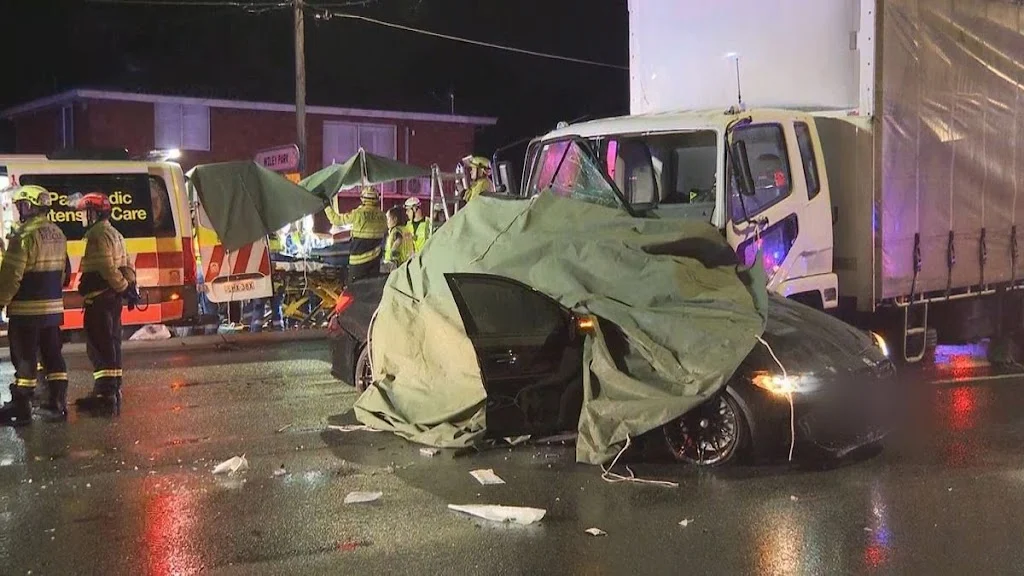A series of serious safety shortcomings by tourism operator Sea World Helicopters contributed to the devastating Gold Coast helicopter crash that killed four people, according to the Australian Transport Safety Bureau (ATSB).
In its final report into the January 2, 2023 crash, the ATSB found that changes Sea World Helicopters made to its location, facilities, and fleet—intended to enhance its services—had unintended and dangerous consequences.
One major flaw identified was in the system designed to alert pilots to the presence of nearby helicopters. The report revealed that the system failed, leading to a tragic miscommunication: neither pilot had an accurate understanding of the other’s position.
On that clear and sunny afternoon, 11 tourists boarded two Eurocopter EC130 helicopters for a scenic flight. The two choppers, operating from separate but nearby helipads, collided — one ascending while the other was landing. Four people aboard the ascending helicopter died when its tail and main rotor were severed, causing it to plummet onto a sandbank.
Those killed included pilot Ashley Jenkinson, Sydney mother Vanessa Tadros, and British couple Diane and Ronald Hughes. Ms. Tadros’s son Nicholas was among those seriously injured, along with Victorian mother Winnie De Silva and her son Leon.
The pilot of the returning helicopter, Michael James, despite serious injuries and severe damage to his aircraft, managed to land on the sandbank. Five of his passengers were injured, two critically.
The ATSB found that having two helipads so close together created a “conflict point.” Limitations in visibility and flawed assumptions that the airspace was clear led to both helicopters occupying the same airspace at the same time.
The report also identified multiple procedural failures:
-
Ground crew protocols: Staff were not required to continuously monitor airspace up to departure, meaning helicopters could lift off without updated hazard information.
-
Communication breakdowns: Changes in ownership at Sea World Helicopters had led to the erosion of safety protocols, including enhanced communication and cockpit traffic displays.
-
Equipment deficiencies: The newer helicopters lacked internal radios, real-time mapping tools, and high-visibility paint on all rotor blades.
About two minutes before the collision, the landing helicopter made an inbound radio call that went unnoticed by the departing pilot, who was preoccupied loading passengers. After loading, a ground crew member cleared the pilot for takeoff—but by that point, the information was outdated, and the inbound helicopter was dangerously close.
Further investigation found that faults in the departing helicopter’s radio antenna likely caused the missed communication.
ATSB Chief Commissioner Angus Mitchell said that, critically, the addition of the second helipad in March 2022 had introduced a permanent conflict zone between ascending and descending aircraft—an area where, tragically, the two helicopters collided.
Sea World Helicopters, in a statement, thanked the ATSB and emphasized its commitment to improving safety protocols, noting that it already exceeded the regulatory requirements of the general aviation sector.
Meanwhile, Shine Lawyers has filed claims in the Queensland Supreme Court on behalf of injured passengers and traumatised witnesses, citing Sea World Helicopters under the Civil Aviation Act, which caps damages at $925,000 per claimant. The firm is also investigating the possibility of additional defendants.
The ATSB report also uncovered that passenger seat belts were improperly fitted, although it was not conclusively determined how much this contributed to injuries.
Mr. Mitchell used the “Swiss cheese model” analogy to explain the crash: multiple small failures aligned simultaneously to cause the disaster. While Sea World Helicopters has addressed many issues identified in the investigation, the ATSB emphasized the need for ongoing vigilance when operational changes are made across the aviation industry.
A coronial inquest will now follow to further examine the circumstances of the tragedy.







